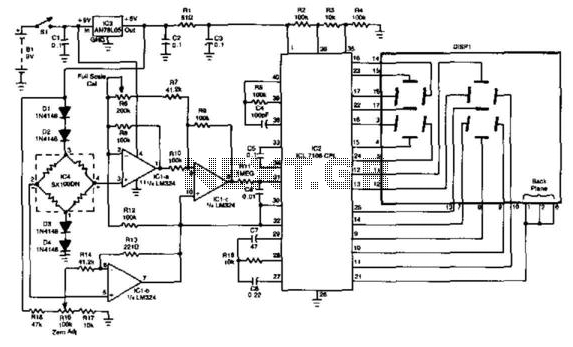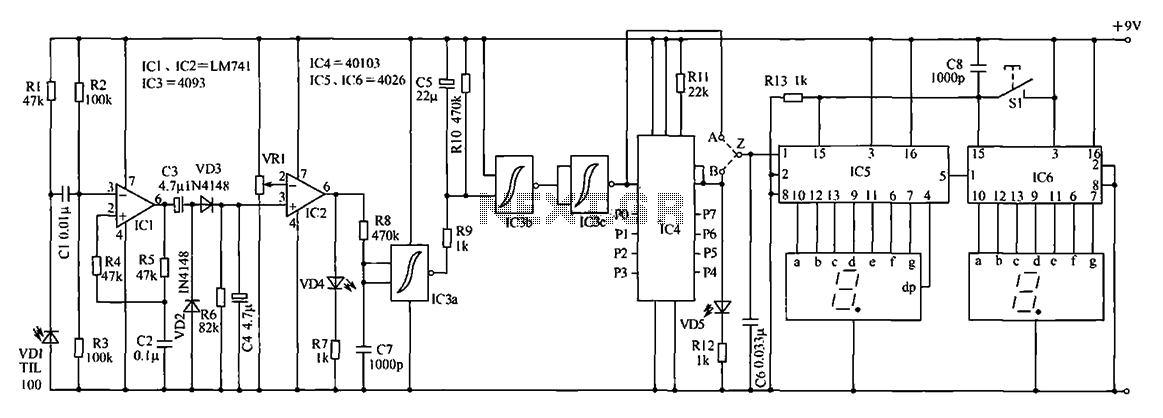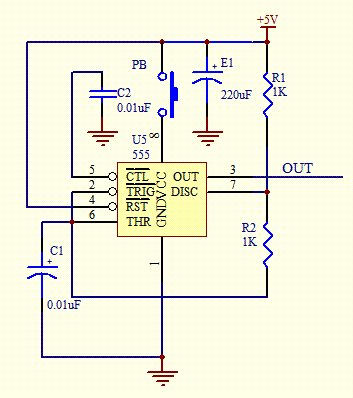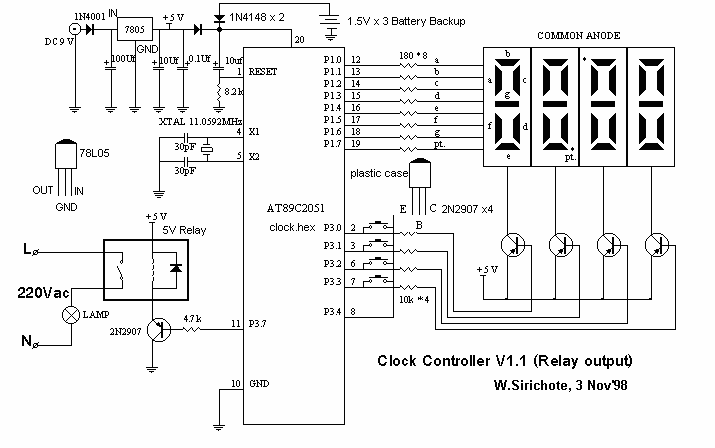
Repair Notes of Ten-Tec Corsair 560 Digital Readout
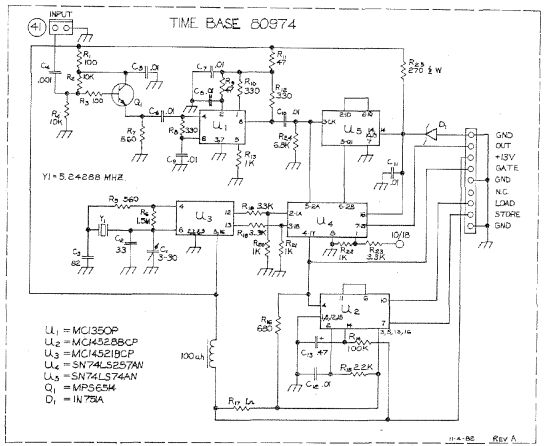
The digital readout of the Corsair 560 is positioned above the tuning knob. In this radio, the six-digit display often fluctuated, frequently doubling the frequency indication. The reading was unstable, making it challenging to determine the tuned frequency. After repairs, the display stabilized significantly down to the green 100 Hz digit. Once the radio warmed up (typically after about 30 minutes), the green LED digit remained stable. One reason for this stability was the modification of the grounding within the digital readout module. This alteration was made to facilitate access to the two circuit boards and to connect them in a manner that would minimize RF and logic level noise. The Ten-Tec Corsair 560 digital readout module, with the top cover removed, reveals the upper circuit board as the underside of the TIME BASE 80974 Rev A board. The housing wall ground straps were removed, and a single tinned braided strap was added near the left edge of the board. Additionally, a short green grounding jumper replaced a longer edge-routed ground jumper. A wooden dowel provides physical support for the right edge of the board. The module also shows the connector board situated between the upper TIME BASE 80974 Rev A board and the lower COUNTER LOGIC BD. 80973 board. An RF ground strap connects the two board ground references, ensuring a low impedance connection that reduces noise and enhances stability. The new grounding method utilizes a wide flat ground strap, which is more effective for low impedance connections and is situated closer to the three ground ports of the connector board. This proximity minimizes the loop area, thereby reducing RF energy circulation and noise. The original grounding method had created a loop defined by the connector board and two ground points on either side of the TIME BASE 80974 Rev A board, increasing the loop area and complicating assembly and disassembly. The inherent stability of the green digit is also attributed to the effective design of Ten-Tec's PTO (Permeability Tuned Oscillator), which is relatively stable despite lacking a crystal reference and being non-digital. Most of the circuitry in the digital readout module is based on high-voltage CMOS technology (TI: 75xxx, Motorola: 40xxx series), with some 74xx series, 5V devices present. The radio utilizes the input power rail for much of its logic circuitry; however, input power exceeding 13.2 volts can damage standard 5V level logic devices. The operational speed of the radio is limited to 6.5 MHz, a typical constraint for mid-1980s technology. Issues with the digital readout module were noted by 2011, as the frequency reading became increasingly unreliable. While the PTO and other oscillators functioned correctly, the digital readout module was suspected to be the source of the problem. The manual does not provide detailed waveforms, stating that there are no user-serviceable components, necessitating some educated guessing. Oscilloscope measurements were utilized to gather more information about the LOAD and STORE signals from the TIME BASE 80974 board. The MK50398N device, a "six-decade counter/display decoder" from MOSTEK Inc., serves as the core of the digital frequency display. By correctly toggling the LOAD and STORE lines, the device generates signals that represent the digits on the LED frequency readout. This process is complicated by the necessity to count over a wide frequency range (1.8 MHz to 29.7 MHz), which requires the circuitry to span two circuit boards. The challenge arises when the frequency is reduced, as the slower counting rate results in a significant increase in the time required for the lowest order decimal digit to change. Consequently, the display's resolution suffers, limiting the user to a less precise frequency reading. The digital display circuitry's behavior can lead to misleading representations of frequency, particularly when transitioning between significant digit changes. The TIME BASE 80974 schematic lacks detailed circuit information, as the integrated circuits are depicted as blocks rather than logical functions, necessitating reference to the respective device datasheets for further understanding. The discrepancy between the physical manual's schematic and the installed TIME BASE 80974 Rev A board further complicates troubleshooting efforts. A thorough analysis of the LOAD and STORE signals indicated that the pulse width of the LOAD signal was inadequate for the digital circuitry to accurately capture counts for frequency display. This realization prompted adjustments to the pulse width, resulting in improved stability of the display down to the green 100 Hz digit. The capacitor C13 and resistor R14 define the time constant for one of the MC14528B multivibrator channels, which generates the LOAD signal. The original capacitor's degradation over time likely contributed to the shrinking pulse width, leading to erratic display behavior. A temporary solution involved replacing C13 with two 0.22 µF polyester capacitors in parallel due to the unavailability of a suitable replacement. The relocation of capacitor C12 was also necessary to accommodate the new components, with the expectation that a correctly sized capacitor would eventually restore the circuit to its intended configuration.The Digital Readout of the Corsair 560 is just above the tuning knob. On this particular radio these six digits bounced around, often doubling the frequency indication. The reading was so unstable, it was difficult to know what frequency the radio was tuned to. Below is a picture of the display after the repair. It is fairly solid down to the gree n 100 Hz digit. Once the radio is warmed up (usually about 30 minutes) the green LED digit pretty much stays put. One of the reasons the readout is so stable is that I modified the grounding inside the Digital Readout module. I did so partly to make it easier to gain access to the two circuit boards, but also I wanted to tie the two boards together in a way that would reduce RF and logic level noise.
Ten-Tec Corsair 560 Digital Readout module with the top cover removed. The upper circuit board is the bottom side of the TIME BASE 80974 Rev A board. The housing wall ground straps were removed, and a single tined braided strap added near the left edge of the board. Also re-routed is a short green grounding jumper. This replaced a longer edge routed ground jumper. The wooden dowel acts as physical support for the right edge of the board. Ten-Tec Corsair 560 Digital Readout module with the top cover removed, showing the connector board between the upper TIME BASE 80974 Rev A board, and the lower COUNTER LOGIC BD.
80973 board. On the right side of the back edge of the TIME BASE 80974 Rev A board, an RF ground strap ties the two board ground references to gether in a low impeadance manner. This reduces noise, and aids stability. The other path is now a low impedance ground strap near the connector board. This is a better method of grounding for two reasons. Firstly the wide flat physical form of the ground strap is better suited for the creation of low impedance connections.
Secondly it is close to the three ground ports of the connector board. The closer these two ground paths are, the smaller the loop area created by them, and thus the less RF energy can circulate through them, thus reducing noise. The original ground path had a loop defined by the connector board, and two ground points one on either side of the TIME BASE 80974 Rev A board, near to where the dowel is now.
Eye straps were bolted into the walls of the enclosure, and soldered to the edges of the board. This made it difficult to disassemble/assemble, and to work with components on the board. It also drastically increased the loop area of the ground system. However, the real reason the green digit is fairly stable is that Ten-Tec did a good job of designing its PTO (Permeability Tuned Oscillator), which is quite stable. Especially considering that it does not have a crystal reference, and is not digital in any way. Most of the circuitry in the Digital Readout module is high voltage CMOS based (TI: 75xxx, Motorola: 40xxx series).
There are a few 74xx series, 5V devices in the radio but for the most part it uses the 18 volt rated CMOS series devices. The major manufacturers (TI, Motorola, Fairchild, . ) have long since abandoned much of these product lines. Ten-Tec decided to use the radio`s input power rail for much of the logic circuitry. Input power of 13. 2 volts or more would destroy normal 5V level logic devices. Nothing runs particularly fast in this radio. Remember this is mid 1980`s technology. Long before personal computers running in excess of 1 GHz, so the sluggish 6. 5 MHz speed limit of CMOS devices wasn`t a problem. This was another one of those not obviously broken failures. The kind of thing where it is clearly broken but when you take it to someone to fix it, it works fine.
Well. by 2011 it was spending more time bouncing all over, than it was reporting a stable frequency. The PTO and other oscillators in the rig were doing more or less what they should, so the problem must be in the digital readout module. Unfortunately the manual provides no detailed waveforms, indeed the manual makes the usual "There are no user serviceable components" claim for the digital readout module, so some judicious guessing was in order.
But guesses can be a bit wild without information, so an oscilloscope was used to obtain more information. If you follow the lines from the LOAD and STORE ports, into U3, you will see the waveform icons. Like I said, not much to go on. Both of these signals come from the TIME BASE 80974 board. The MK50398N is a "six-decade counter/display decoder", according to a datasheet From MOSTEK Inc. Wikipedia has an entry explaining who MOSTEK was, they are no longer. This counting device is the "brains" of the digital frequency display. By toggling the LOAD and STORE lines properly, the device can generate signals that will form the digits of the LED frequency readout.
This sounds simple enough but doing so over a factor of about 16. 5 (1. 8 MHz through 29. 7 MHz) is a bit more involved. This wide range of counting is why the circuits to provide the user those 6 digits, is spread over two circuit boards. The problem can be thought of this way. roughly. Suppose you set up the counter to provide 6 digits of resolution on the 10m band. That implies you can show 296999 on your display, representing 29. 6999 MHz. Presuming your control pulses can handle this, you are all set. Now suppose you don`t change the control pulses at all but drop the frequency to 1. 799 MHz. You have just reduced the number of events you are counting by a factor of 16. 67, over the same timing. This implies that it now takes 16. 67 times longer for the lowest order decimal digit (going from 00 0001 to 00 0002 takes 16. 67 times longer) to change. The largest count you will now get is 17 999 but you would like to use all 6 of your available digits or 17999 0.
And yet you can`t because your control pulses are set up for a much faster signal, and the bottom decimal digit cannot be resolved. Note that the factor of 16. 67 calls much of the next highest decimal digit into question as well, since each digit can accommodate only 0 through 9 (ten different values), and there are a total of 16.
67 required. Thus the real cost in resolution is two decimal places. A loss of two decimal places is a real problem. Instead of knowing your frequency down to 10 Hz, you only know it to within about 1 KHz. The counter is capable of 6 digits of resolution but you are only getting about 4, on the lowest amateur band of the radio. But look what happens as the display rolls over 9. 99999 to 10. 0. The display capacity is "n. nnnnn", and you need "nn. nnnnn". The upper digit pops off into no where. What is supposed to look like "10. 0000" (you only get 6 digits) looks like "0. 00000". All of a sudden your radio frequency is zero ! If the digital display circuitry behaved this way, which it does not, any frequency within the 560`s capabilities with a number other than "0" in the tens position will be represented by the lower order digits only.
Unfortunately the TIME BASE 80974 schematic hides much of the circuit detail. Some insight may be gleaned from the circuit descriptions of the PTO, and the counter circuitry. However, there is not a detailed description of what the circuits are doing, and why. In the above picture of the TIME BASE 80974 schematic the ICs are represented as blocks, not as logic functions. This means one must consult the datasheet of the respective devices to see the detail of how the designer configured the circuit.
Another problem, in this case, is that the TIME BASE 80974 schematic in the physical manual, is not what is in the Digital Readout module. The module has a TIME BASE 80974 Rev A board installed. The manual`s schematic for the TIME BASE 80974 board has only three ICs. Not Five. Figuring out how the circuit does what it does in detail will be left to another time. At the moment we are trying to solve a specific problem, so how the circuit works in detail will be abandoned for the sake of expediting the present repair effort.
Perhaps a better way to understand this is to take a look at a "good" set of waveforms. The two signals in question are the LOAD and STORE signals. Which can be seen below The above is a screen capture of good LOAD and STORE signals, from the TIME BASE 80974 board. The LOAD signal is on Ch 2 (upper trace). The STORE signal is on Ch 1 (lower trace). The key point is that the upper trace (LOAD signal) had a pulse width that was about as wide as the lower trace in the image above.
This was not good, and probably made it hard for the digital circuitry to capture good counts to be displayed as frequencies. The above is an estimate of the original LOAD signal. It was created using a capture of the correct waveform as a basis. The purpose of this graphic is to suggest how the vertical dashed lines represent a more significant percentage of the pulse width.
The 500 s width of the two dotted/dashed vertical cursor lines, bound the variation of the pulse width of the LOAD signal. As can be seen in the graphic this 500 s bound represents a significant percentage of the overall pulse width.
In this way the graphic suggests the problem the electronics was having. The variation in count value differed significantly, between captures, and thus made it difficult to calculate the frequency. Therefore the display was unstable, and varied widely between captures. The result of this correction in pulse width dramatically improved the stability of the display. With this correction to the pulse width, the digits of the display were stable down to the green colored 100 Hz digit.
Over the years it most likely dried out, and lost most of its capacitance. Consequently the pulse width of the LOAD signal shrank until the display began jumping in value. The capacitor C13 along with the resistor R14 define a time constant for one of U2`s (MC14528B) Multivibrator channels. In this case the channel produces the LOAD signal. These two components dictate the width of this pulse. The MC14528B data sheet has an equation for calculating pulse width on the device. Unfortunately timing longer than 100 s is not supported. Be that as it may, the numbers can be plugged into the equation, This calculated pulse width is about twice the 11.
75 ms measured value. However, recall that the MC14528B data sheet limits its use to 100 s or less in pulse width. In this application the device is being asked to operate at over 1000 times longer than that period. It comes as little surprise then that there is a great deal of difference between the calculated and measured value. The best thing to have done would have been to simply replace C13 with the correct form factor component.
Unfortunately I did not have any small 0. 47 F capacitors on hand. I did have a couple 0. 22 F, 100V polyester capacitors. In the photo below they may look like ceramics but are polyester. The C13 capacitor through hole foot print is just to the left of the IC. Just to the right of the IC are the two 0. 22 F capacitors connected in parallel. A little hot glue provides some mechanical stability. The capacitor C12 was in the way, on the right side of the IC. It was relocated on the back side of the board, so that there would be enough room for the two polyester caps. Capacitor C12 was relocated to the bottom side of the TIME BASE 80974 Rev A board. An edge of one of the 0. 22 F capacitors can be seen peeking out from behind the left edge of the circuit board. When/if a capacitor, with the correct form factor, is available for C13 the paired 0. 22 F capacitors can be removed, and C12 can be put back in its original position. 🔗 External reference
Ten-Tec Corsair 560 Digital Readout module with the top cover removed. The upper circuit board is the bottom side of the TIME BASE 80974 Rev A board. The housing wall ground straps were removed, and a single tined braided strap added near the left edge of the board. Also re-routed is a short green grounding jumper. This replaced a longer edge routed ground jumper. The wooden dowel acts as physical support for the right edge of the board. Ten-Tec Corsair 560 Digital Readout module with the top cover removed, showing the connector board between the upper TIME BASE 80974 Rev A board, and the lower COUNTER LOGIC BD.
80973 board. On the right side of the back edge of the TIME BASE 80974 Rev A board, an RF ground strap ties the two board ground references to gether in a low impeadance manner. This reduces noise, and aids stability. The other path is now a low impedance ground strap near the connector board. This is a better method of grounding for two reasons. Firstly the wide flat physical form of the ground strap is better suited for the creation of low impedance connections.
Secondly it is close to the three ground ports of the connector board. The closer these two ground paths are, the smaller the loop area created by them, and thus the less RF energy can circulate through them, thus reducing noise. The original ground path had a loop defined by the connector board, and two ground points one on either side of the TIME BASE 80974 Rev A board, near to where the dowel is now.
Eye straps were bolted into the walls of the enclosure, and soldered to the edges of the board. This made it difficult to disassemble/assemble, and to work with components on the board. It also drastically increased the loop area of the ground system. However, the real reason the green digit is fairly stable is that Ten-Tec did a good job of designing its PTO (Permeability Tuned Oscillator), which is quite stable. Especially considering that it does not have a crystal reference, and is not digital in any way. Most of the circuitry in the Digital Readout module is high voltage CMOS based (TI: 75xxx, Motorola: 40xxx series).
There are a few 74xx series, 5V devices in the radio but for the most part it uses the 18 volt rated CMOS series devices. The major manufacturers (TI, Motorola, Fairchild, . ) have long since abandoned much of these product lines. Ten-Tec decided to use the radio`s input power rail for much of the logic circuitry. Input power of 13. 2 volts or more would destroy normal 5V level logic devices. Nothing runs particularly fast in this radio. Remember this is mid 1980`s technology. Long before personal computers running in excess of 1 GHz, so the sluggish 6. 5 MHz speed limit of CMOS devices wasn`t a problem. This was another one of those not obviously broken failures. The kind of thing where it is clearly broken but when you take it to someone to fix it, it works fine.
Well. by 2011 it was spending more time bouncing all over, than it was reporting a stable frequency. The PTO and other oscillators in the rig were doing more or less what they should, so the problem must be in the digital readout module. Unfortunately the manual provides no detailed waveforms, indeed the manual makes the usual "There are no user serviceable components" claim for the digital readout module, so some judicious guessing was in order.
But guesses can be a bit wild without information, so an oscilloscope was used to obtain more information. If you follow the lines from the LOAD and STORE ports, into U3, you will see the waveform icons. Like I said, not much to go on. Both of these signals come from the TIME BASE 80974 board. The MK50398N is a "six-decade counter/display decoder", according to a datasheet From MOSTEK Inc. Wikipedia has an entry explaining who MOSTEK was, they are no longer. This counting device is the "brains" of the digital frequency display. By toggling the LOAD and STORE lines properly, the device can generate signals that will form the digits of the LED frequency readout.
This sounds simple enough but doing so over a factor of about 16. 5 (1. 8 MHz through 29. 7 MHz) is a bit more involved. This wide range of counting is why the circuits to provide the user those 6 digits, is spread over two circuit boards. The problem can be thought of this way. roughly. Suppose you set up the counter to provide 6 digits of resolution on the 10m band. That implies you can show 296999 on your display, representing 29. 6999 MHz. Presuming your control pulses can handle this, you are all set. Now suppose you don`t change the control pulses at all but drop the frequency to 1. 799 MHz. You have just reduced the number of events you are counting by a factor of 16. 67, over the same timing. This implies that it now takes 16. 67 times longer for the lowest order decimal digit (going from 00 0001 to 00 0002 takes 16. 67 times longer) to change. The largest count you will now get is 17 999 but you would like to use all 6 of your available digits or 17999 0.
And yet you can`t because your control pulses are set up for a much faster signal, and the bottom decimal digit cannot be resolved. Note that the factor of 16. 67 calls much of the next highest decimal digit into question as well, since each digit can accommodate only 0 through 9 (ten different values), and there are a total of 16.
67 required. Thus the real cost in resolution is two decimal places. A loss of two decimal places is a real problem. Instead of knowing your frequency down to 10 Hz, you only know it to within about 1 KHz. The counter is capable of 6 digits of resolution but you are only getting about 4, on the lowest amateur band of the radio. But look what happens as the display rolls over 9. 99999 to 10. 0. The display capacity is "n. nnnnn", and you need "nn. nnnnn". The upper digit pops off into no where. What is supposed to look like "10. 0000" (you only get 6 digits) looks like "0. 00000". All of a sudden your radio frequency is zero ! If the digital display circuitry behaved this way, which it does not, any frequency within the 560`s capabilities with a number other than "0" in the tens position will be represented by the lower order digits only.
Unfortunately the TIME BASE 80974 schematic hides much of the circuit detail. Some insight may be gleaned from the circuit descriptions of the PTO, and the counter circuitry. However, there is not a detailed description of what the circuits are doing, and why. In the above picture of the TIME BASE 80974 schematic the ICs are represented as blocks, not as logic functions. This means one must consult the datasheet of the respective devices to see the detail of how the designer configured the circuit.
Another problem, in this case, is that the TIME BASE 80974 schematic in the physical manual, is not what is in the Digital Readout module. The module has a TIME BASE 80974 Rev A board installed. The manual`s schematic for the TIME BASE 80974 board has only three ICs. Not Five. Figuring out how the circuit does what it does in detail will be left to another time. At the moment we are trying to solve a specific problem, so how the circuit works in detail will be abandoned for the sake of expediting the present repair effort.
Perhaps a better way to understand this is to take a look at a "good" set of waveforms. The two signals in question are the LOAD and STORE signals. Which can be seen below The above is a screen capture of good LOAD and STORE signals, from the TIME BASE 80974 board. The LOAD signal is on Ch 2 (upper trace). The STORE signal is on Ch 1 (lower trace). The key point is that the upper trace (LOAD signal) had a pulse width that was about as wide as the lower trace in the image above.
This was not good, and probably made it hard for the digital circuitry to capture good counts to be displayed as frequencies. The above is an estimate of the original LOAD signal. It was created using a capture of the correct waveform as a basis. The purpose of this graphic is to suggest how the vertical dashed lines represent a more significant percentage of the pulse width.
The 500 s width of the two dotted/dashed vertical cursor lines, bound the variation of the pulse width of the LOAD signal. As can be seen in the graphic this 500 s bound represents a significant percentage of the overall pulse width.
In this way the graphic suggests the problem the electronics was having. The variation in count value differed significantly, between captures, and thus made it difficult to calculate the frequency. Therefore the display was unstable, and varied widely between captures. The result of this correction in pulse width dramatically improved the stability of the display. With this correction to the pulse width, the digits of the display were stable down to the green colored 100 Hz digit.
Over the years it most likely dried out, and lost most of its capacitance. Consequently the pulse width of the LOAD signal shrank until the display began jumping in value. The capacitor C13 along with the resistor R14 define a time constant for one of U2`s (MC14528B) Multivibrator channels. In this case the channel produces the LOAD signal. These two components dictate the width of this pulse. The MC14528B data sheet has an equation for calculating pulse width on the device. Unfortunately timing longer than 100 s is not supported. Be that as it may, the numbers can be plugged into the equation, This calculated pulse width is about twice the 11.
75 ms measured value. However, recall that the MC14528B data sheet limits its use to 100 s or less in pulse width. In this application the device is being asked to operate at over 1000 times longer than that period. It comes as little surprise then that there is a great deal of difference between the calculated and measured value. The best thing to have done would have been to simply replace C13 with the correct form factor component.
Unfortunately I did not have any small 0. 47 F capacitors on hand. I did have a couple 0. 22 F, 100V polyester capacitors. In the photo below they may look like ceramics but are polyester. The C13 capacitor through hole foot print is just to the left of the IC. Just to the right of the IC are the two 0. 22 F capacitors connected in parallel. A little hot glue provides some mechanical stability. The capacitor C12 was in the way, on the right side of the IC. It was relocated on the back side of the board, so that there would be enough room for the two polyester caps. Capacitor C12 was relocated to the bottom side of the TIME BASE 80974 Rev A board. An edge of one of the 0. 22 F capacitors can be seen peeking out from behind the left edge of the circuit board. When/if a capacitor, with the correct form factor, is available for C13 the paired 0. 22 F capacitors can be removed, and C12 can be put back in its original position. 🔗 External reference

